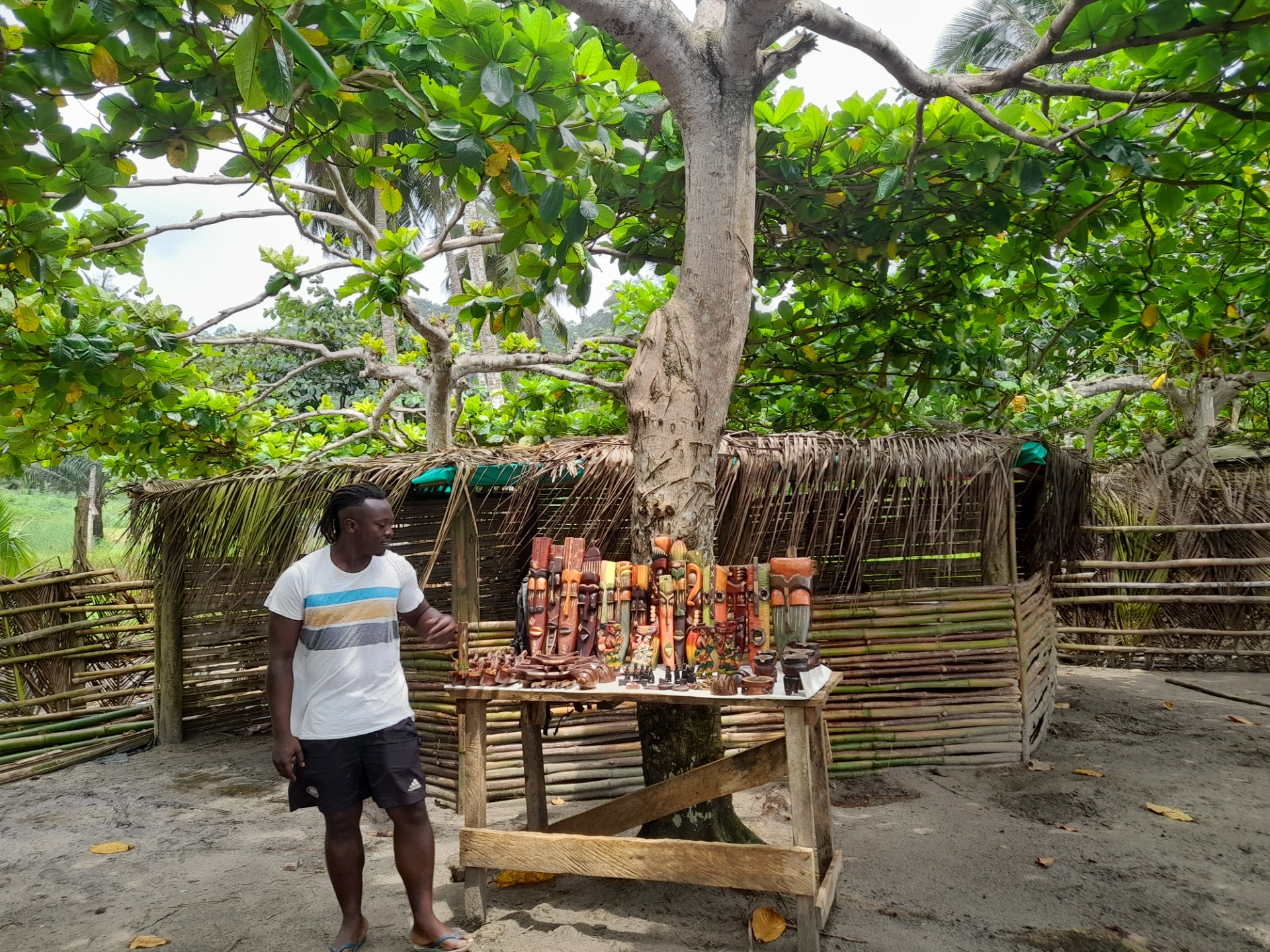Special Development Zones in São Tomé and Príncipe
Special Development Zones in São Tomé and Príncipe: Catalysts for Sustainable Growth
São Tomé and Príncipe (STP), a pristine archipelago in the Gulf of Guinea with a population of around 232,000, has long grappled with economic underdevelopment in its rural and peripheral regions. To address this, the government established Special Development Zones (Zonas Especiais de Desenvolvimento, or ZEDs) under the Investment Code (Decree-Law No. 19/2016) and the Fiscal Benefits Code (Decree-Law No. 15/2016). These zones aim to channel investments into underserved areas, fostering job creation, infrastructure improvement, and diversification beyond traditional cocoa exports. As of September 19, 2025, ZEDs represent a strategic pillar of STP's economic blueprint, aligning with IMF-backed reforms and the newly launched Citizenship by Investment (CBI) program, which indirectly boosts FDI into these areas.
Defining the Special Development Zones
ZEDs encompass the districts of Cantagalo, Lembá, Lobata, and Caué on the main island of São Tomé, alongside the entire Autonomous Region of Príncipe. Additional zones can be designated by government decision, allowing flexibility to target emerging needs. These areas were selected due to their relative isolation from the capital, São Tomé city, where economic activity is concentrated. For instance, Cantagalo and Lembá in the northwest feature lush rainforests and coastal access ideal for eco-tourism, while Caué in the south offers untapped agricultural potential, and Lobata supports small-scale industry. Príncipe, a UNESCO Biosphere Reserve, stands out for its biodiversity and remoteness, making it a prime spot for sustainable projects.
The zones' designation reflects STP's National Land Use Planning Program (PNOT, approved in 2020), which integrates sub-plans for these districts and Príncipe to promote balanced territorial development. By prioritizing ZEDs, the government seeks to reduce urban-rural disparities, where poverty rates can exceed 50% in peripheral areas, and stimulate a projected 3.1% GDP growth for 2025.

.
Eligible Activities in ZEDs
Investments in ZEDs must align with sectors that drive local value addition and sustainability. Eligible activities include:
Tourism, encompassing eco-lodges and adventure experiences leveraging STP's unique biodiversity.
Forestry and fishing, focusing on sustainable harvesting and aquaculture to bolster food security.
Livestock rearing, with emphasis on modern techniques to enhance protein production.
Water supply initiatives, such as rainwater harvesting and desalination to combat scarcity.
New technologies, including renewable energy (solar and hydro) and digital hubs for remote work.
Construction of agricultural infrastructure, like irrigation systems and processing facilities.
Construction of tourism and hotel infrastructure, prioritizing low-impact designs.
Construction of commercial infrastructure, such as markets and logistics centers.
Industry, limited to light manufacturing like agro-processing.
Specialized training centers for skills development in priority sectors.
Infrastructures supporting senior citizens, youth, and children, including community centers and vocational programs.
These activities are vetted through the Agency for Promotion of Commerce and Investment (APCI) to ensure they contribute to national goals, such as the UN Sustainable Development Goals.
Incentives for Investors
The allure of ZEDs lies in their tailored incentives, designed to offset logistical challenges like poor road connectivity. Key benefits include total exemption from import duties on equipment exclusively for project implementation, provided no equivalent national products match the required quality or technical specifications. This is verified via a provisional list submitted to the General Directorate of Customs, reducing upfront costs by up to 100% for machinery in eligible sectors.
Broader perks under the Investment Code extend to ZEDs, such as a reduced Corporate Income Tax (IRC) rate of 10% for new activities (versus the standard 25%), and accelerated amortization at double normal rates for tourism, education, health, tech, and exports. Reinvested profits can yield deductions up to 30% of the tax base if creating over 20 jobs annually for seven years. For agriculture, livestock, and fishing—core ZED focuses—investors enjoy a 50% IRC cut for the first seven years, followed by 25% for two more, plus a 0.2% tax on foreign capital inflows and exemptions on capital investment income taxes.
Large-scale projects exceeding $10 million qualify for exceptional incentives via Council of Ministers-approved contracts, potentially waiving multiple taxes including withholding, stamp, consumption, and real estate transfer (SISA). In ZEDs, these are amplified: exemptions from SISA on property, same reinvestment benefits as initial investments, and recognition of startup costs as IRC-deductible. The CBI program, effective since August 2025, funnels donations ($90,000 minimum) into ZED-aligned projects like renewables and housing, offering investors visa-free access to 57 countries and moderate taxes (no wealth or inheritance levies).
These incentives are non-cumulative with general ones but irrevocable during their term, administered through APCI's One-Stop Shop (GUE) for swift approvals (1-5 days).

.
Broader Context and Challenges
ZEDs form part of STP's diversification strategy amid fiscal pressures (public debt ~70% of GDP) and external shocks. The Nigeria-São Tomé and Príncipe Joint Development Zone (JDZ), established in 2001 for offshore oil, has underperformed—yielding minimal revenues despite exploratory drilling by Shell in 2022 and planned for 2025—highlighting risks in resource-dependent models. In contrast, ZEDs emphasize green growth, supported by the IMF's Extended Credit Facility (approved December 2024), which mandates revoking the Temporary Law on Investment Incentives (Law 9/2023) by year-end to enhance transparency.
Challenges persist: Infrastructure gaps (e.g., unreliable power in Caué) inflate costs, while climate vulnerability threatens Príncipe's ecosystems. Enforcement relies on limited capacity, and FDI inflows remain modest (~$20 million annually). Yet, successes like the Integrated Development Project in Lembá (PDIL), which created jobs in carpentry and horticulture, demonstrate potential.
Opportunities for Investors
ZEDs position STP as an affordable gateway to African markets, with low entry barriers (e.g., €50,000 minimum for basic incentives) and 100% foreign ownership. Eco-tourism in Príncipe could yield high ROI, given its "Galápagos of Africa" status, while agro-infrastructure in Cantagalo taps global demand for organic cocoa derivatives. Pairing with CBI grants dual benefits: economic returns and citizenship perks.
For investors eyeing STP's blog-worthy paradise, ZEDs offer not just fiscal relief but a chance to drive equitable progress. As reforms unfold, engaging APCI early ensures compliance amid evolving rules. With thoughtful investment, these zones could transform STP's periphery into engines of prosperity.
Administrative Districts of São Tomé and Príncipe
According to the "Administrative Division Law" established on November 21, 1980, the country is divided into seven districts (Água Grande, Cantagalo, Caué, Lembá, Lobata, Mé-Zochi, and Pagué), with six districts on São Tomé and one on Príncipe, which has the status of an Autonomous Region. Each district is further subdivided into towns and villages.

Based on the 2012 census, here are the districts of São Tomé and Príncipe along with their respective population figures:
Água Grande
- Capital: São Tomé
- Population: 69,772
Cantagalo
- Capital: Santana
- Population: 17,169
Caué
- Capital: São João dos Angolares
- Population: 6,062
Lembá
- Capital: Neves
- Population: 14,676
Lobata
- Capital: Guadalupe
- Population: 19,414
Mé-Zóchi
- Capital: Trindade
- Population: 44,763
Pagué (Autonomous Region of Príncipe)
- Capital: Santo António
- Population: 7,344